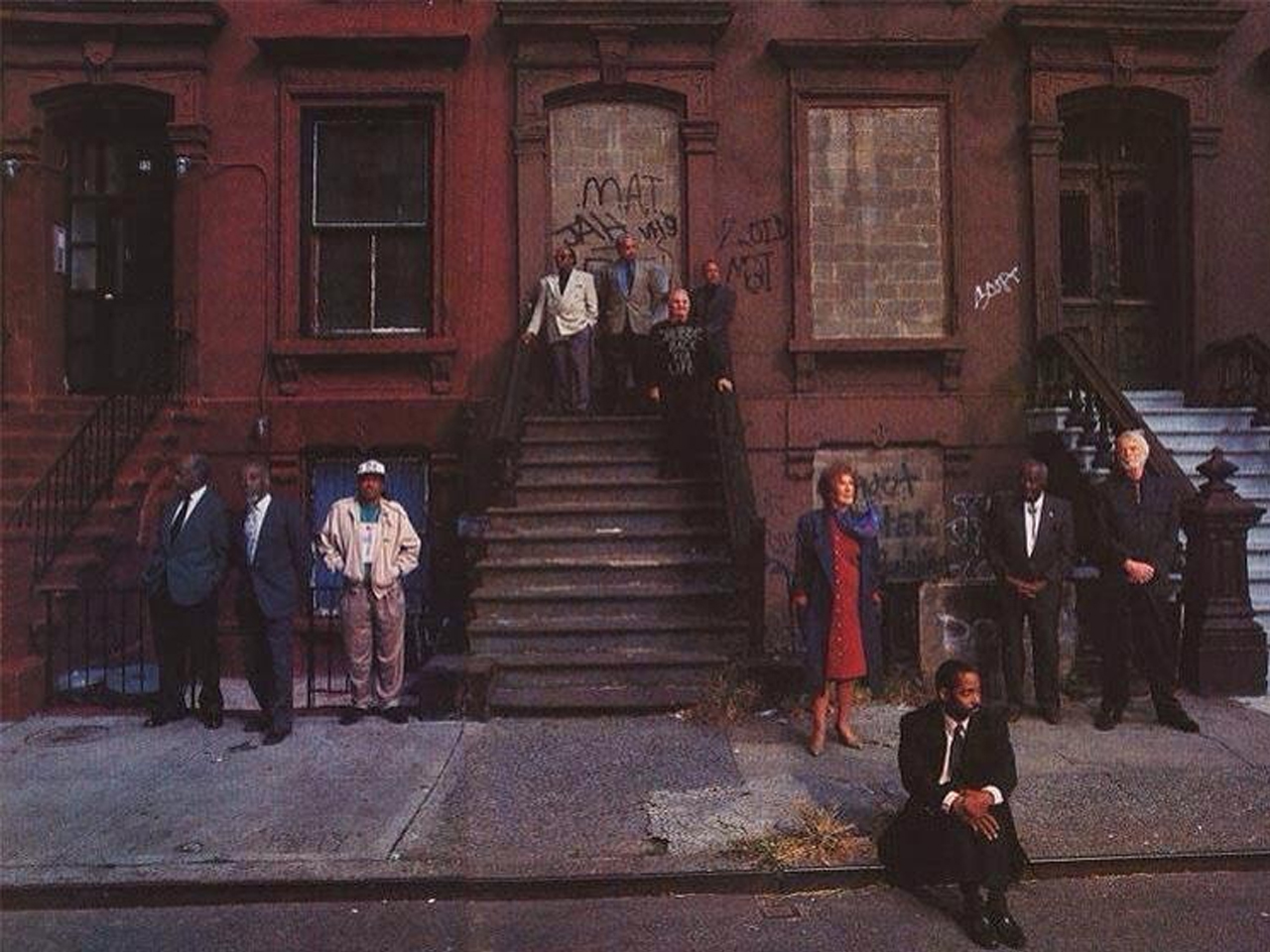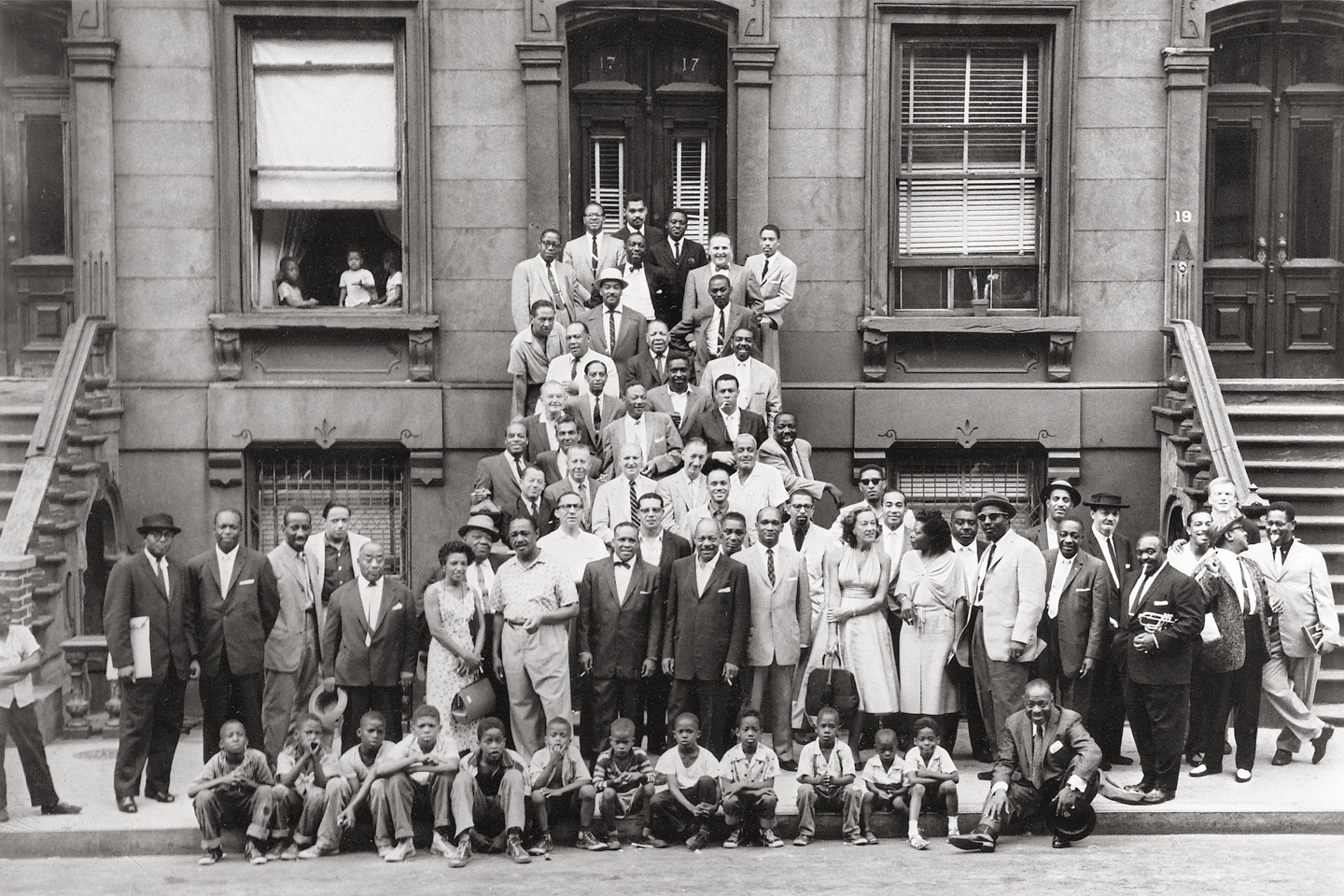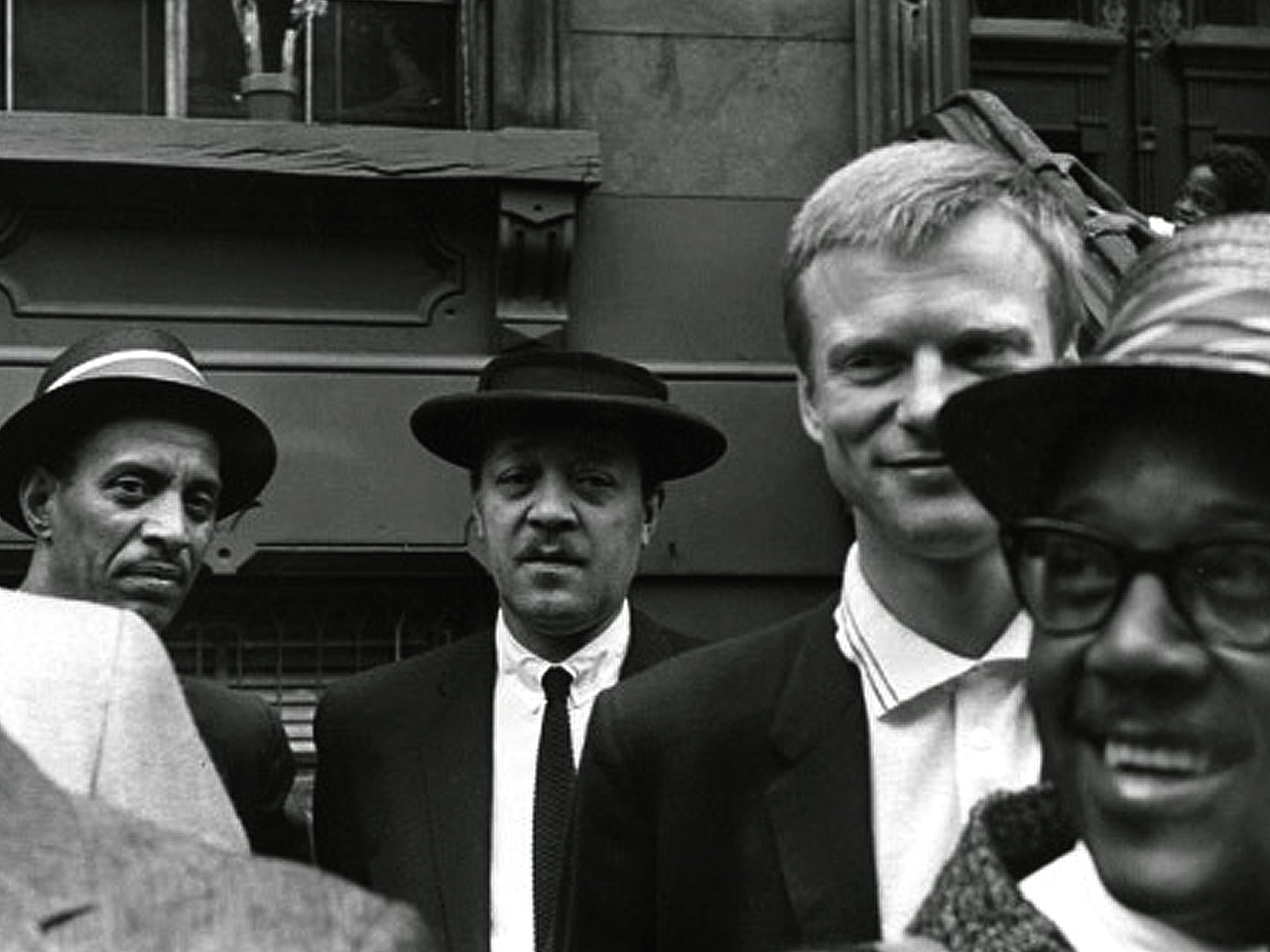The whole audacious idea was conceived by a man who none of the musicians knew, 33-year-old Art Kane, who had made a name for himself as a magazine art director but whose passion was photography. This was his first professional shooting assignment and, with it, he ended up making history almost by accident.
“He became aware that Esquire was planning a big issue on jazz,” says Jonathan Kane, Art’s son, a musician and photographer who also manages his late father’s photographic legacy (Art Kane died in 1995). “He cooked up the idea of doing a big portrait (with) all these musicians. Art pitched his crazy idea, and they said, Do it.” There was no question about where he would shoot. “Harlem was where the jazz scene came into being and coalesced,” Kane says. “It had to be in Harlem. And he wanted a place that reflected everyday life rather than a club. This could be a street where anybody could live.”
After scouting for a typical building on a typical block, Kane chose 126th St. between Fifth and Madison Aves. He wanted one that was convenient to the subway and what was then the New York Central Railroad (now Metro North), which had a station at 125th and Park. He put out the call for musicians through agents, record labels, union halls, clubs — pretty much any channel he could think of.
“There were musicians from several eras of jazz. That picture depicted what a robust scene it was for jazz musicians in New York.”


“Certain things end up being bigger than the original intention. The photograph has become part of our cultural fabric.”
One of the musicians answering the call was Sonny Rollins, the brilliant tenor saxophonist who was 27 years old when the picture was shot and already among the period’s most acclaimed jazz artists. Rollins, who says he started playing music when he was 7 or 8 years old, had grown up in central Harlem, surrounded by the ferment of jazz. “All of the black musicians lived in Harlem, it was the only place you could live,” he says. “Harlem was the place. All my idols, like Fats Waller, all these people performed around where I went to school, at P.S. 89, at 135th Street and Lenox Avenue. So it was quite a community.”
When he heard about the photo shoot, he knew he had to be there. “I didn’t hesitate,” says Rollins, who is now 85 and, along with Benny Golson, one of only two surviving musicians in the photo. “Something like that had never been done, and the guys were just eager to do it. I certainly was eager to do it. They were all my compadres. It was great fun.”


They had fun even though the start time, in jazz terms, was brutal. Because he wanted to utilize the best light on the north side of the street, avoiding any shadows, Kane asked people to arrive by 10 a.m. — a tall order for artists who typically worked until 4 in the morning. In the 1994 documentary about the photograph, Steve Frankfurt, who was assisting Kane that day, put that early call time in perspective: “Somebody said they didn’t realize there were two 10 o’clocks in the same day.”
The nighthawks showed up anyway, dressed to the nines and ready for action. They came by subway and commuter train. They came by taxi and on foot. Among the greats who made the gig that morning were Thelonious Monk, Charles Mingus, Gene Krupa, Mary Lou Williams, Roy Eldridge, Milt Hinton and Lester Young. It was a crazy scene, made even more beautiful by the row of neighborhood kids who sat in a row along the curb alongside a jovial Count Basie. “There were musicians from several eras of jazz,” Rollins says. “I think that picture depicted what a robust scene it was for jazz musicians in New York.”